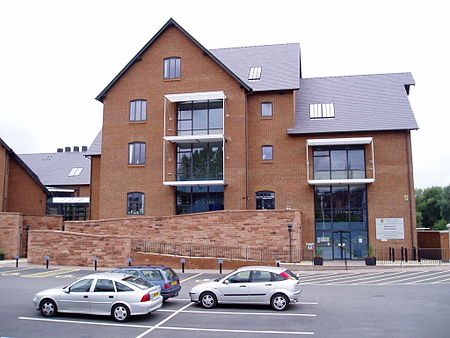Frankwell

Frankwell is a district of the town of Shrewsbury, in Shropshire, England. It lies adjacent to the River Severn, to the northwest of the town centre, and is one of Shrewsbury's oldest suburbs. The main road running through the area is also called Frankwell. Frankwell grew up as a port and trading location by the river and on the road to Wales, but across the river from the walled borough of Shrewsbury and therefore beyond the town's jurisdiction. There have been a number of suggestions about where the name derives from, but one possible origin is "Frankville", which means a town of free trade. Being independent from the larger borough of Shrewsbury gave it a local nickname of the Little Borough, a name which is used to this day. Today Frankwell continues to be a commercial area of the town, lying just outside the town centre, with its own character and identity. There has been much redevelopment recently near to the river, especially now flood defences have been constructed, and new buildings include The Guildhall (originally built for Shrewsbury and Atcham Borough Council) and Theatre Severn.
Excerpt from the Wikipedia article Frankwell (License: CC BY-SA 3.0, Authors, Images).Frankwell
Nettles Lane,
Geographical coordinates (GPS) Address Nearby Places Show on map
Geographical coordinates (GPS)
| Latitude | Longitude |
|---|---|
| N 52.7112 ° | E -2.7592 ° |
Address
Nettles Lane 31
SY3 8QF , Frankwell
England, United Kingdom
Open on Google Maps








